One tiny event can have outsized and non-linear influence on outcomes.
This is the “Butterfly Effect” – the metaphorical idea that the flapping of wings by a butterfly in one continent can set off a typhoon in a completely different geography!

A meteorologist, Lorenzo developed this idea in the 1960s. He used this phrase to describe his discovery that even the smallest rounding up of numbers (tiny, butterfly- like changes) in a weather forecasting model could fluctuate a forecast from a violent hailstorm to a bright sunny day. He concluded that even miniscule shifts have the power to change outcomes by many degrees of magnitude.
Multiple time travel movies and books have used The Butterfly Effect to add dramatic tension. Even the tiniest changes the protagonist makes each time s/he travels back in time, upends the future completely.
For example, In Stephen King’s book, 11/22/63, Jake travels back to 1958 to prevent the assassination of President John F. Kennedy. He believes this will benefit humanity. He succeeds in preventing Lee Harvey Oswald from shooting Kennedy. But when he returns to present time, instead of a new improved world, he finds total ruin in the form of earthquakes and nuclear war. Jake of course realizes his folly, and returns to 1958 to reset history.
Stephen King described this in an article as, “Not good to fool with Father Time”.
Think Domino, not lever
As Farnam Street’s blog mentions, the visual mental model for Butterfly Effect is that of a Domino Effect, not a Lever.
A lever of the right length and in the right position, can move even mountains.
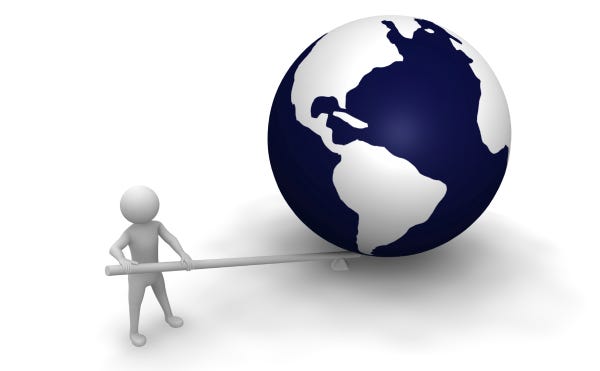
But a small domino can set in motion a series of unrelated events, each increasing in impact.
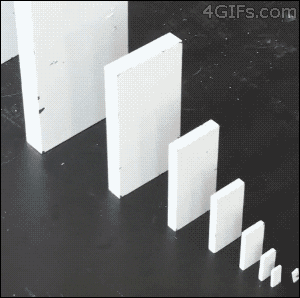
Butterfly effect examples in our lives
1)Butterfly effects make sense in hindsight: Butterfly effects are once in a lifetime low probability – high impact events. And they reveal themselves in the rear view mirror.
After all, we know we exist today because an asteroid deviated an inch from its orbit 4.5 billion years ago!
Flapping of a Bat’s wings catapulted Ecommerce: It took 10 years for e-commerce to grow from 6% to 16% of retail sales in the US. But it took just eight pandemic weeks (Mar-Apr 2020) to reach 27% from 16%.

2)Marketers want to ‘create’ butterfly events: it is every marketer’s dream to make a butterfly effect in the form of a brand video thatgoes viral and earns millions of views overnight. For a brief moment, time stands still and the brand achieves cult status.
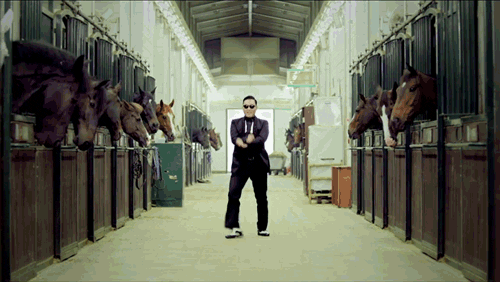
3)Some butterfly effects impact generations: Viral videos could give 15 seconds of fame, but acts of generosity can impact generations.
In 1975, Neil deGrasse – a 17 year-old starry eyed wannabe astrophysicist submitted his application to Cornell and Harvard. He was bowled over when Cornell Prof. Carl Sagan invited him over to spend a day at the the university. Carl’s generosity did not stop there. He personally picked Neil up at the bus station, gave him a campus tour, spent all day answering all his questions, let him play with the gadgets, and gave him a signed copy of his book! What’s more, he signed it to “a future astronomer”.
Though Neil ultimately chose to go to Harvard, Carl Sagan’s generosity had an enormous impact. Neil says, “To this day, I have a duty to respond to students who are inquiring about the universe as a career path; a duty to respond to them in the way that Carl Sagan responded to me.”

My Butterfly Effect
My butterfly effect was rejection. Four times over. In 1996, I cleared the CAT exam for all four IIMs. But I failed the interviews. All four of them.
I did not want to ‘waste’ one year and apply again, so I decided to go to MDI Gurgaon for my MBA.
It was 1998. I was in my second year of MBA. I was majoring in marketing. MDI was not exactly fertile ground for the best job offers from Blue Chip companies. True to my track record of failing interviews, I again failed all the Day 0 and Day 1 Blue Chip FMCG and consulting interviews I had been shortlisted for. I ended up with a property sales job with Colliers Jardine. Nevertheless, I was determined to make the most of what was on my plate and started preparing mentally for the property business.
Students who had landed jobs were no longer in the running to sit for more interviews, but had to fill auditorium seats during pre-placement talks. So one crisp winter evening, we attended L’Oreal’s pre-placement talk.
Even as I write this, I am transported back to that moment. I can see myself seated in the middle of the third row from the back, in a dark auditorium. I am dressed in formals, the lights and shadows of the audio visual presentation reflect on my face. Time stood still for me. And I felt the L’Oreal CMO was speaking only to me. My eyes shone with the certainty that this was a call of destiny.
I wanted, no I needed to work at L’Oreal.
There was no other future I was willing to consider.
Failing this interview was not an option.
The next day, the CEO came in for hiring. Since I already had a job, I was not eligible to apply, but I convinced the placement head to allow me to hand over my resume after the scheduled interviews had been completed.
Thinking the process would take a while, I went back to my hostel room for a quick nap. As (bad) luck would have it, I over slept. Got up with a start. Rushed to the placement venue. The CEO had selected a candidate, made an offer and left for the airport.
As a strong woman ready for the corporate world, I handled the problem by promptly bursting into tears.
But this time, I was clear history would not repeat itself. As I gasped for breath, I remembered that my roommate’s, boyfriend owned a car. The three of us piled into said car and drove at full speed towards the airport, hoping to chase down the L’Oreal CEO. (I kid you not, this is a true story).
We had driven so fast that the CEO’s car pulled in just minutes after us. I met him at the main entrance, told him how much I wanted to be a part of his company and gave him my resume. He interviewed me right there in the parking lot and gave me the job.
Had I got into an IIM, I would not have been able to join my dream company (L’Oreal was a startup then, and did not visit IIM campuses), and I would not have built a foundation in the premium and bottom-up form of marketing that L’Oreal teaches.
Are we doomed?
On a more philosophical note… If the Butterfly Effect is real, are there teeny tiny flutters that might be shaping our destiny and we don’t even realize it?!
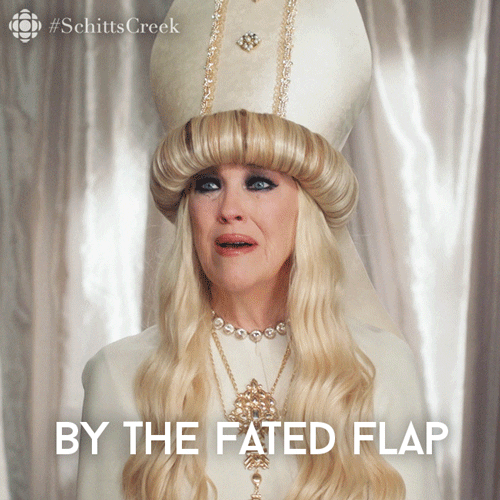
Or are we doomed to lose our life’s work in the micro second that Goddess Tyche turns her gaze of good fortune away from us?
In my opinion, speculating whether destiny has the power to impact outcomes for us, is a waste of time. What we can do instead, is consciously design butterfly effects into our lives.
How?
Through tiny daily habits and by taking risk.
Tiny daily habits
Tiny daily habits are butterfly effects that compound goodness over time.
James Clear in his book, Atomic Habits, says that if we focus on improving just 1% daily, within just one year, we will be 37 times better. But if we become 1% worse everyday, we will be left with just a shadow of our competencies.
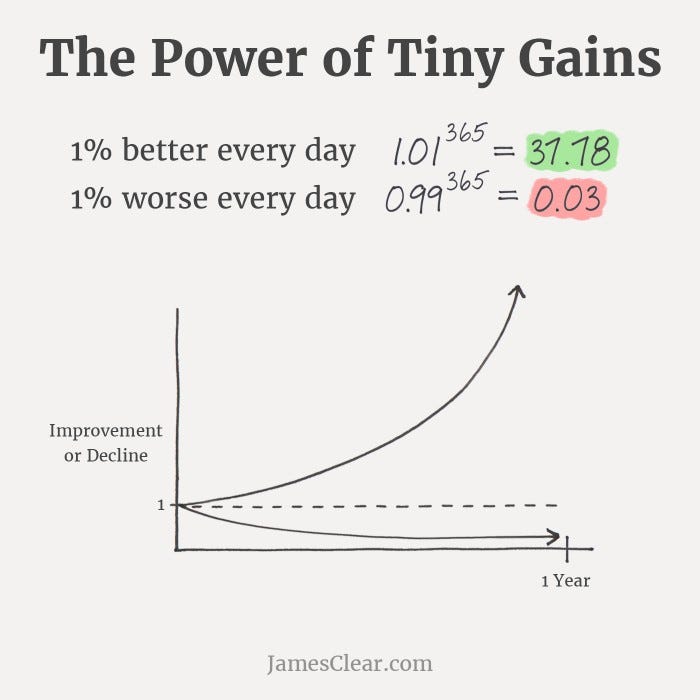
- 1% daily improvement over 1 year ⇒ 1.01^365 = 37.8 ⇒ 37 times better
- 1% daily decline over 1 year ⇒ 0.99^365 = 0.03 ⇒ 99% worse
I talk more about this in my newsletter on compounding.
Take risk
A sure shot way to build butterfly effects into our life is to create low probability-high impact events i.e. take risk.
Venture capitalists do this all the time with their investment portfolios. They lose money on 99% of their investments but make outsized returns on 1% that makes up for all the losses and then some.
If once in a while, your heart is not racing. Your mouth is not dry. And you are not trembling like a thousand ants huddled together on a freezing winter morning, you are not taking a risk.
Go on, create a portfolio of butterfly effects in your life. You never know which one will pay off.
I would love to hear about butterfly effects from your life. Write to me.
